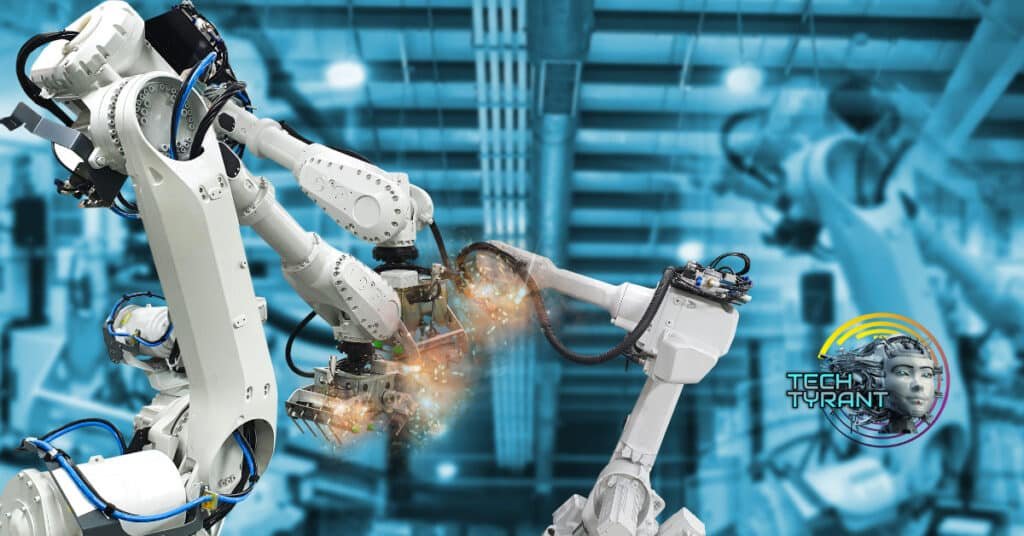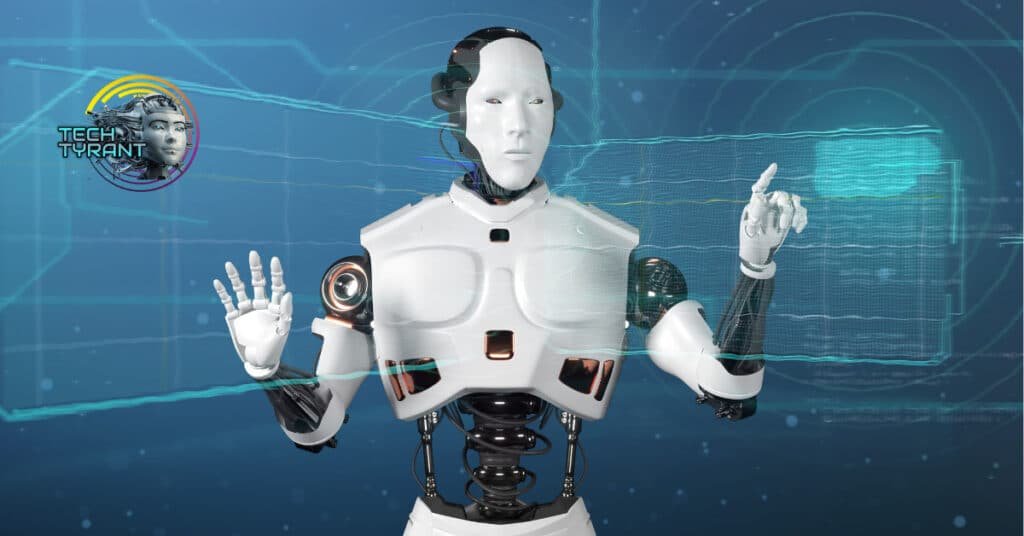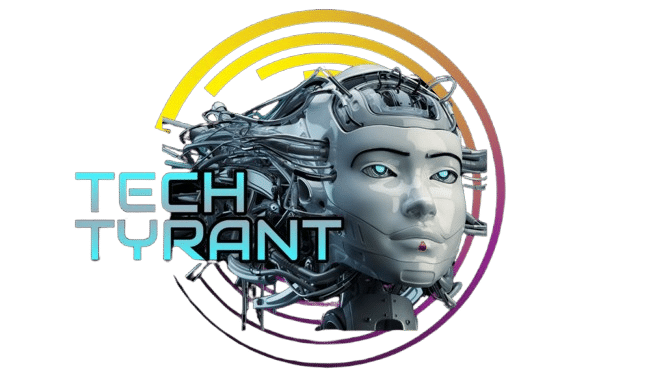The Future of Robotics: How Robots Will Shape the Workforce
The global industrial automation software market is huge, covering 232 pages. It has lots of data on key players and new trends1. As AI and machine learning get better, robots will change how we work. The need for Industrial Internet of Things (IIoT) and more robotic automation in different areas shows this clearly1.
This article will look at the latest in robotic automation and AI. It will also talk about how industrial robots are being used more around the world. As AI entrepreneurship evolves, big changes in the workforce are coming. Businesses need to get ready and adjust to these changes.
Key Takeaways:
- The global industrial automation software market is a vast and rapidly evolving industry, with major players like ABB, Emerson Electric, and Siemens driving innovation.
- The growing need for IIoT technology and the demand for eco-friendly, cost-reducing automation solutions are fueling the market’s expansion.
- Robotic automation is on the rise, with the virtualization of control systems and the deployment of industrial robots across a wide range of industries.
- The future of robotics will significantly impact the workforce, requiring businesses to anticipate and adapt to the changing landscape of human-robot interaction.
- Strategies for navigating the new workforce landscape, such as reskilling and workforce transformation, will be crucial for organizations to remain competitive.
The Rise of Robotic Automation
The world of robotics is changing fast, thanks to AI and ML. These technologies let robots do many tasks with great precision and speed. They are changing industries all over the world2.
Advancements in Artificial Intelligence and Machine Learning
AI and ML are making robots smarter and more flexible. They can now handle complex tasks easily. This is starting a new era of robotic automation, where machines can do many things on their own3.
The Growing Adoption of Industrial Robots
More businesses are using industrial robots. They help with tasks that are repetitive, dangerous, or hard. This makes work safer, more efficient, and helps companies stay ahead2.
| Automation Trend | Percentage |
|---|---|
| Enterprise-scale companies incorporating AI development services | 42% |
| Companies considering incorporating AI development services | 40% |
| Companies considering incorporating generative AI into workflows | 42% |
| Firms employing AI to various degrees, showcasing an increase in automation | 55% |
| Organizations using generative AI tools to access private company information | 48% |
| Organizations concerned about generative AI tools potentially violating legal and intellectual property rights | 69% |
The table shows more companies are using AI and automation. A big part of them are already using these technologies or thinking about it3.
“The agreement with Constellation Energy is an essential step in Microsoft’s efforts to bring more carbon-free energy to the grid and be carbon negative by 2030.”2
As we move forward, robotics will change the way we work. AI and ML will play a big role in this change23.
The Future of Robotics: How Robots Will Shape the Workforce
Robots are set to change the workplace deeply. They will do more tasks, altering job types and needed skills4. Workers will need to adjust to this new tech world and learn to work with robots.
Robots will mainly handle repetitive tasks4. As AI grows, they’ll do complex jobs like managing projects and making decisions4. This will let humans focus on creative and strategic work, changing what skills are needed.
But, robots coming into the workforce brings challenges. There’s worry about jobs being lost to automation4. To tackle this, workers will need to learn new skills and adapt to the tech changes.
Also, we must think about the ethics of using robots at work4. As AI gets smarter, we’ll need strong rules to make sure it’s used right.

Yet, robots also bring chances for growth4. They can make work more efficient, letting humans do more important tasks4. Plus, robots that work with humans can make teams more productive.
The future of robotics will change the workforce a lot4. By getting ready and learning new skills, everyone can do well in this new tech world.
Collaborative Robots: Transforming Human-Robot Interaction
Collaborative robots, or cobots, are changing how humans and machines work together. These advanced robots help humans by doing tasks that are repetitive, dangerous, or hard5. They have special sensors and safety features, so they can work close to people without risk5.
Enhancing Productivity and Efficiency
Cobots can make work better and faster. AI robots could make labor 40% more productive in some fields by 20356. They also help businesses by making things cheaper and more competitive6.
Safety Considerations and Training Requirements
But, there are safety and training needs to think about. Safety features like sensors and emergency stops are key for safe work5. Workers also need good training to work well with these robots6.
As more companies use cobots, keeping workers safe and training them well is very important56.
The Impact on the Workforce
Robots and automation are changing the job market a lot. Some jobs might get automated, causing technological unemployment and job displacement. Workers will need to learn new skills as old jobs disappear and new ones appear.
Technological Unemployment and Job Displacement
Robots and AI can now do many tasks that humans used to do. This means jobs might get lost because automated systems are cheaper and more efficient. Workers might have to find new jobs or industries as their old ones become outdated2.
Reskilling and Workforce Transformation
Companies and governments need to focus on reskilling and workforce transformation. They should give workers the training they need for future jobs. This way, everyone can adapt and find new opportunities7.
Braskem, a big chemical company, is working on this issue. They opened a Renewable Innovation Center in Massachusetts. It will help with new green chemicals and materials8. This shows Braskem’s commitment to innovation and preparing workers for the future.
| Key Impacts on the Workforce | Strategies for Adaptation |
|---|---|
| Technological Unemployment Job Displacement | Reskilling Initiatives Workforce Transformation Collaboration between Employers, Education, and Policymakers |
“Successful workforce transformation will require a collaborative effort between employers, educational institutions, and policymakers to invest in the development of the workforce.”
Navigating the New Workforce Landscape
The workforce is changing, and companies and workers need to adapt. They must plan for a future with more robots and humans working together6. This means creating new policies, training workers, and focusing on their growth6.
Employers need to talk with their teams about how robots and automation affect work. They should find ways to use these technologies to help employees grow and succeed.
The introduction of collaborative robots, or “cobots,” is changing work9. These robots are flexible, safe, and boost productivity in many fields9. In factories, they make work easier and faster. In healthcare, they help with patient care and give out medicine9.
To handle this new work world, everyone needs to work together. Employers should plan carefully for the future of work6. They might need to teach workers new skills to work with robots6. They also need to make sure robots are used safely and that workers can adapt9.
The manufacturing industry is growing, with about 8.4% of US workers in it10. Companies are using robots to help with work, like fixing shortages and staying competitive10. But, it’s important for everyone to work together to make this change fair and smooth10.
By working together and using robots wisely, companies can do better work and be more innovative69. The secret is good planning, training, and everyone’s commitment to change6910.

Conclusion
The future of robotics will change the workforce a lot. New tech like artificial intelligence and machine learning are making big changes. These changes bring both good and bad sides11.
As robots get better at working, we all need to learn how to work with them. Companies and workers must get ready for this new world. By doing this, we can make sure humans and robots work well together. This will help us grow and succeed in many areas1213.
The future of robotics and changing the workforce is full of ups and downs. We need everyone to work together to make it work. By getting ready for this change, we can make the most of robots and automation. This will help our economy grow and make life better for workers in many fields.
FAQ
What are the key advancements driving the rise of robotic automation?
New tech in artificial intelligence (AI) and machine learning (ML) lets robots do more tasks. They work better and faster. This is why more industries are using robots.
How are industrial robots transforming the workforce?
Companies use robots to do tasks that are hard, dangerous, or take a lot of work. This makes work safer and more efficient. It’s changing what jobs are available and what skills are needed.
What are the benefits and considerations of collaborative robots (cobots)?
Cobots work with people to make work better. They do tasks that are hard or risky. But, it’s important to teach workers how to safely work with cobots.
How will the integration of robots and automation impact employment?
Robots and automation might make some jobs disappear. Workers will need to learn new skills. This way, they can do new jobs that come up.
What strategies are needed to address the impact of robotics and automation on the workforce?
Companies and governments need to focus on training workers. They should teach people new skills for the jobs of tomorrow. This will help everyone adapt and find new work.
Source Links
- https://www.openpr.com/news/3662241/industrial-automation-software-market-to-witness-excellent – Industrial Automation Software Market to Witness Excellent Revenue Growth Owing to Rapid Increase in Demand
- https://www.techmeme.com/ – Techmeme
- https://ventsmagazine.com/2024/09/20/how-artificial-intelligence-is-shaping-the-future-of-technology/ – How Artificial Intelligence is Shaping the Future of Technology – Vents Magazine
- https://medium.com/@bathinitarun/the-future-of-ai-entrepreneurship-what-to-expect-in-the-next-5-years-23a2ea2c00c8 – The Future of AI Entrepreneurship: What to Expect in the Next 5 Years
- https://semiconductor.samsung.com/news-events/tech-blog/navigating-into-the-driverless-from-a-first-hand-autonomous-driving-experience-to-the-technology-behind-it/ – Navigating into the Driverless – from a First-Hand Autonomous Driving Experience to the Technology Behind It I Samsung Semiconductor Global
- https://www.electronicdesign.com/markets/automation/article/55140896/querypal-integrating-ai-into-robotics-the-fusion-of-hardware-and-software-design – Integrating AI into Robotics: The Fusion of Hardware and Software Design
- https://www.smartindustry.com/podcasts/podcast/55139330/podcast-moving-the-shop-floor-toward-digital-manufacturing – Podcast: Moving the shop floor toward digital manufacturing
- https://www.packworld.com/sustainable-packaging/bio-based/news/22920915/braskem-braskem-announces-the-official-opening-of-its-renewable-innovation-center-in-lexington-massachusetts – Braskem Announces the Official Opening of its Renewable Innovation Center in Lexington, Massachusetts
- https://www.moneycontrol.com/news/opinion/revolutionising-industry-the-transformative-role-of-collaborative-robots-12825064.html – Revolutionising Industry: The transformative role of collaborative robots
- https://www.thesilverink.com/why-the-us-manufacturing-sector-is-struggling-to-keep-up/ – Why the US Manufacturing Sector Is Struggling to Keep Up – The Silver Ink
- https://learnopencv.com/multimodal-rag-with-colpali/ – Multimodal RAG with ColPali and Gemini
- https://citymagazine.si/en/bmw-is-already-replacing-human-labor-with-humanoid-robot-figure-02/ – BMW is already replacing the human workforce with the Figure 02 humanoid robot
- https://www.mdpi.com/2673-5768/5/3/49 – A Framework for Total Productivity Management (TPMan) in a Resort Environment





